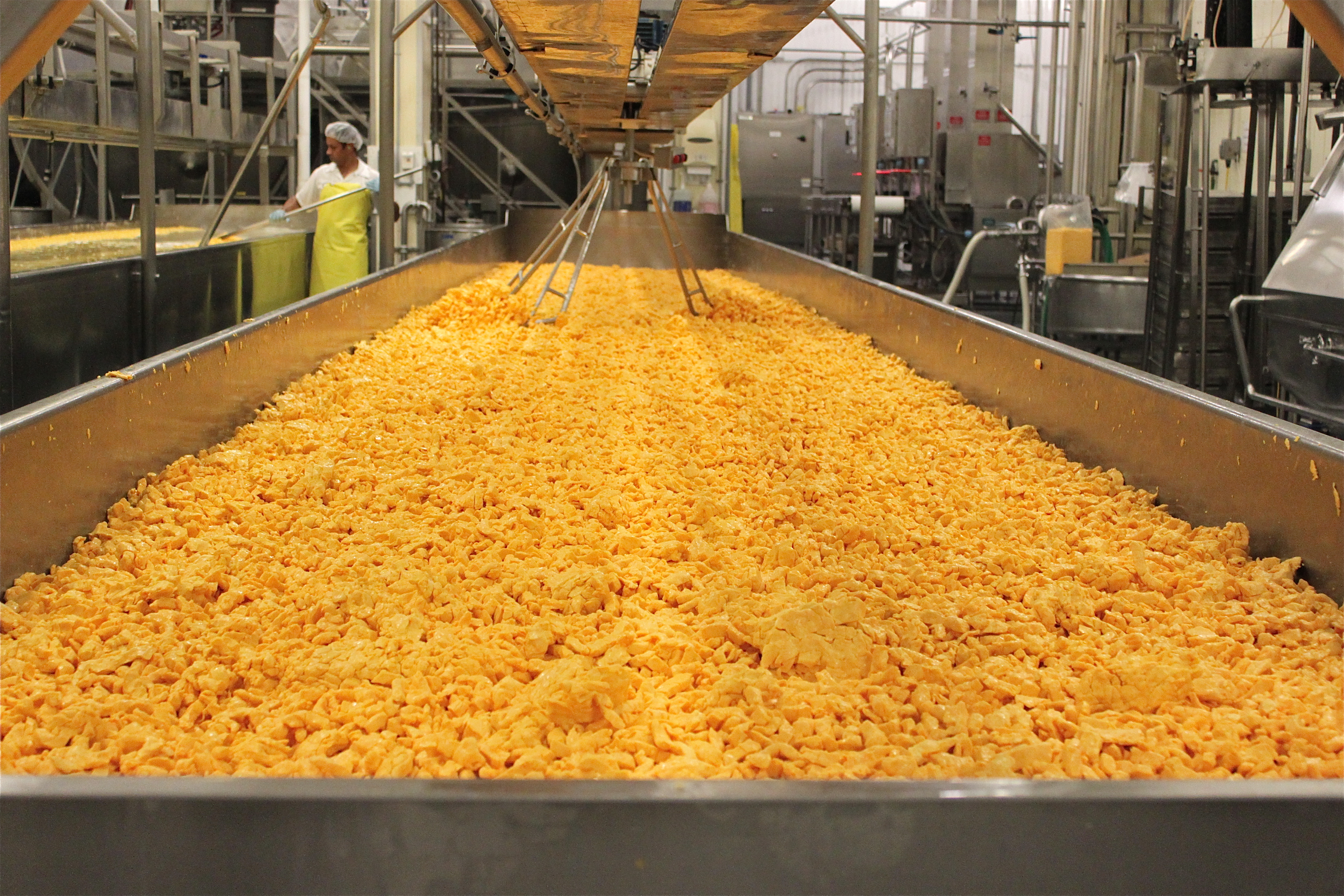Crafting our Award-Winning Cheddar Cheese
Posted by: Bothwell Cheese Team

We certainly cannot reveal our secret traditional recipe, but we can give you a general overview of how we produce our coloured cheddar.
It begins with 100% pure Canadian milk that is pasteurized then mixed with a solution called “starter”, which contains strains of bacteria to inoculate the milk. Microbial enzyme is added to help the milk coagulate into a gelatin-like texture; this is followed by the addition of our all-natural annatto colouring. As the milk thickens and begins turning into cheese, it is stirred continuously until it reaches our desired specifications.
The vats are heated to cause the whey to separate from the milk solids and then the curds and whey are drained on to long tables. The whey is drained and curds allowed to form into compact slab of cheese. The slabs are then cut into foot-long pieces and piled two slabs high. They are re-piled and turned over and over every 15 minutes to drive out the excess moisture until the desired PH level is reached.
Once the desired PH and texture are reached, the cheese is “milled” into finger pieces called curds. These little curds are stirred and salted, then pushed into a pick up auger and sent to a block former, where they are pressed under vacuum to form compact blocks. . The block of cheese is then vacuum sealed in bags, packed and sent to the warehouse for aging.
What happens next is a crucial step that our master cheesemakers take to keep us ahead of the competition. They test the PH level on every batch of cheese to determine the aging potential. Higher PH cheese means better aging qualities for our Medium and Old Cheddars. Lower PH cheese becomes our Mild Cheddar and is distributed fresh to various retailers in South-Eastern Manitoba.



